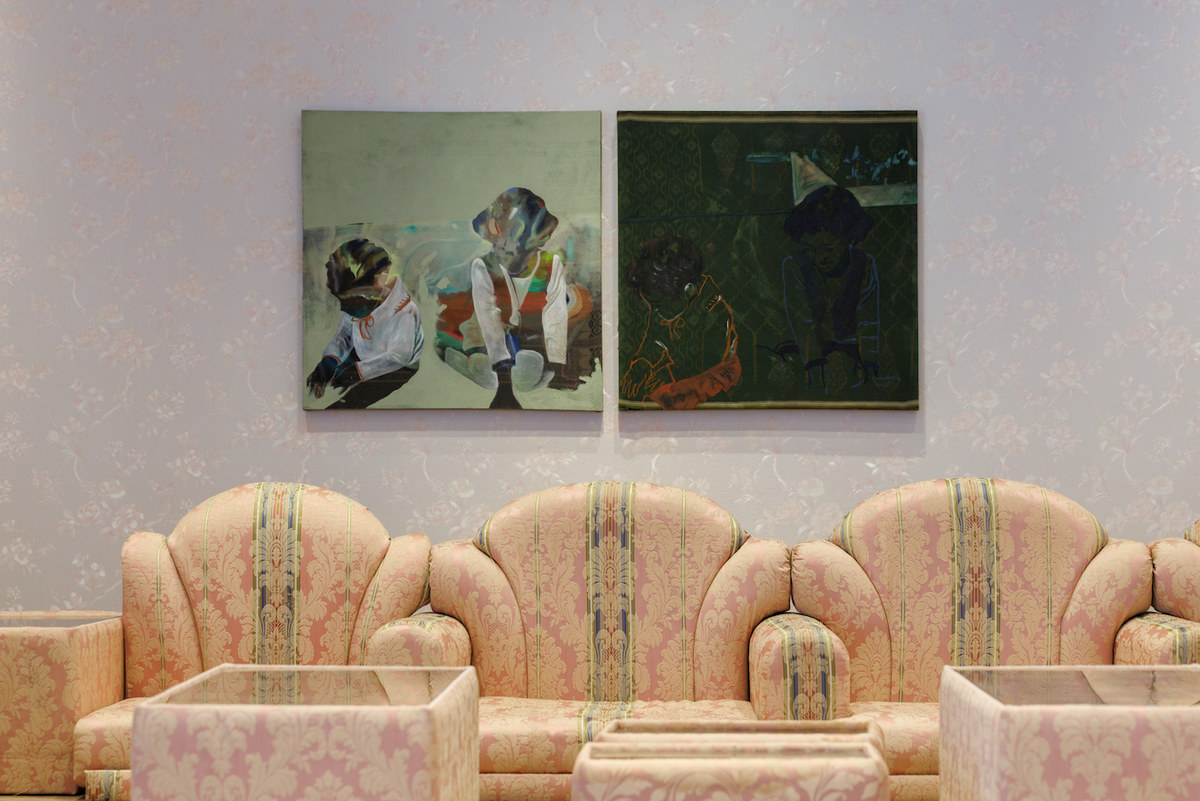DUBAI: “Make yourself at home” isn’t an invitation you’d normally associate with an art gallery. But that’s exactly the atmosphere Emirati painter Almaha Jaralla wanted to evoke with her latest exhibition, “Seham,” which runs until Sept. 1 at Dubai’s Tabari Art Space. The exhibition hosts an old-fashioned majlis, decorated with floral wallpaper, and visitors are welcome to take a seat.
“When you go to a gallery show, you feel a bit tense. (It’s often) very cold, like a white cube space,” Jaralla tells Arab News. “We wanted to break that and make it an actual majlis. On opening night, it felt like a family gathering. Everyone was sitting on the chairs, and it did make it feel more home-y and relaxed.”

Almaha Jaralla, Old Corniche 1 Seham, 2023. (Supplied)
Surrounding the majlis is a group of Jaralla’s figurative paintings, based on snapshots taken in the Eighties by a special family member, the eponymous Seham, who is the aunt of Jaralla’s father. Her name means ‘arrows’ in Arabic, and that gives a hint about her character. “She’s resilient and always there for everyone,” explains Jaralla. “We all love her, but we’re scared of her at the same time because she’s very serious.”
Using a Fuji camera, Seham captured and archived various shots of life in Abu Dhabi, where Jaralla was raised, as well as close family moments, from beach trips to birthday parties. Going through the images with Seham got Jaralla thinking. “I wanted to understand my dad’s generation — but from the women’s side,” she says.
She spoke with female family members, including her great-grandmother, whose experiences were about simpler times — with more face-to-face interaction — that required a dose of creativity.

Almaha Jaralla, BTB. (Supplied)
“They used to go out as a group a lot. Because of the limited number of places to go, they would create their own places. They would just take their Land Cruiser and drive around,” says Jaralla. “It’s changed now. Now, we know all about what my cousins are doing through Instagram.”
One of the places that Jaralla’s family ‘created’ through their outings is a remote area called Al-Shelaylah, today a beach, between Dubai and Abu Dhabi. “They just saw it and set up tents there,” she says. “They were trying to discover the (country).”
Jaralla also depicts children playing at the sea, uncles barbecuing, and aunties strolling along the now-demolished old corniche of Abu Dhabi. Her paintings, she explains, are “a study of family dynamics of the Eighties, and the change of landscape and environment.”

Jaralla's “Seham” exhibition runs until Sept. 1 at Dubai’s Tabari Art Space. (Supplied)
Jaralla was born in the Nineties and remembers how busy Abu Dhabi was — the traffic, the noise, and the construction. In 2006, when she was around 10 years old, she had a sudden realization when crossing Al-Maqta Bridge. It was built in 1968, three years prior to the unification of the UAE. To put that in historical context, 1968 was the year that civil rights icon Martin Luther King Jr. was assassinated, NASA’s Apollo 8 space mission was launched, anti-Vietnam war protests escalated in the Western world, and violent riots (a ‘cultural revolution’) swept across France.
In one of her paintings, she portrays the bridge in an isolated, purple-colored mode from a bird’s eye view. “In 2006, we moved out of the suburbs. That was the first time we crossed Al-Maqta Bridge and I remember it very clearly: I saw the water and was like, ‘Woah, we live on an island,’“ she recalls. “We moved to the desert and it was a huge shift. That’s why the bridge is very important, historically, to a lot of people. It started the construction of the city itself and connected the mainland to the islands.”
Most of Jaralla’s evocative images are painted in light colors with faded faces. At times, the color scheme emulates the reddish and blueish filter of Seham’s old snapshots. While Jaralla didn’t feel nostalgic when creating the work, she admits it was a cathartic experience.
“It was really emotional,” she says. “There are a lot of lost ones. Seeing these kids being moms now. . . I wanted to understand what happened and I would sit with my family and talk. It can get very emotional, seeing people change.”












